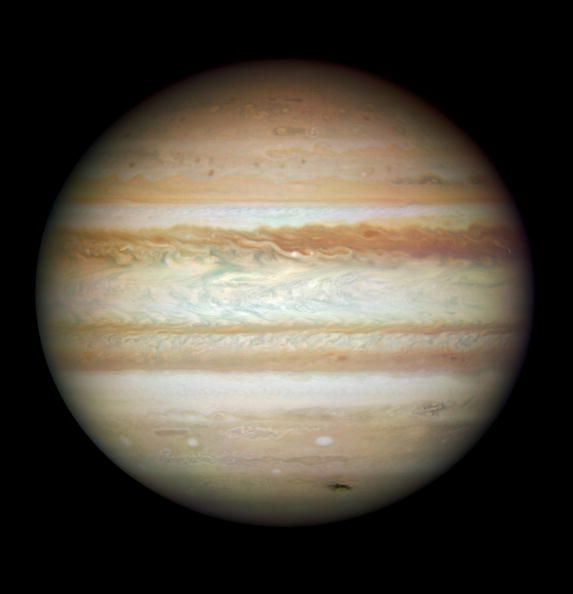Stunning Jupiter 'Maelstrom' Captured By NASA's Juno [PHOTO]
A cyclonic storm in Jupiter has been captured in a stunning new image by NASA's Juno spacecraft.
On the official Juno Mission Twitter page, NASA shared an incredible view of a swirling storm in Jupiter's northern hemisphere. The color-enhanced image, which was taken by the JunoCam imager, shows "bright white clouds [that] can be seen popping up in and around the arms of a rotating northern hemisphere storm."
In the arms of the maelstrom: in this view from JunoCam, bright white clouds can be seen popping up in and around the arms of a rotating northern hemisphere storm. https://t.co/p5ms1ZhFa2 pic.twitter.com/p0s1KlCPvL
— NASA's Juno Mission (@NASAJuno) April 4, 2019
NASA's Juno took the latest image of Jupiter on Feb. 12 at 9:25 a.m. PST (12:25 p.m. EST) during its 17th flyby of the gas giant. The photo shows the view from about 5,000 miles (8,000 kilometers) above Jupiter's cloud tops.
Citizen scientists Gerald Eichstädt and Seán Doran combined data from Juno's camera to create the spectacular image. Check out the official Juno mission website to see the original images of Jupiter's swirling storm taken by the JunoCam.
Last month, NASA also released another image from Juno, this time showing Jupiter as a whole. The most notable features in the color-enhanced image are Jupiter's Great Red Spot and the planet's "turbulent" southern hemisphere.
Also taken during Juno's 17th flyby of Jupiter, three images captured on Feb. 12 were used to create the view. The images were obtained between 9:59 a.m. PST (12:59 p.m. EST) and 10:39 p.m. PST (1:39 p.m. EST) while the probe was 16,700 miles (26,900 kilometers) and 59,300 miles (95,400 kilometers) above Jupiter's cloud tops.
Everyone’s talking 🏀, but I have something even bigger on my mind. I captured this striking view of #Jupiter, its Great Red Spot and its turbulent southern hemisphere during a close pass of the gas giant planet in February. Details: https://t.co/c70rBGfOq3 pic.twitter.com/nVlDsLzwr7
— NASA's Juno Mission (@NASAJuno) March 21, 2019
But while the Juno is busy gathering data about Jupiter, two upcoming missions are set to help mankind learn more about the gas giant's icy moon, Europa.
The Europa Clipper is set to start its journey to the Jupiter system in 2023 and will make around 40 flybys of Europa. The probe will study the satellite's composition, geology and hidden interior ocean.
"Europa we don't really get — there are these really key mysteries we're trying to understand," Robert Pappalardo, a planetary scientist at NASA's Jet Propulsion Laboratory and project scientist for the mission, told Space.com. "[Europa Clipper] is going to tell us so much about how icy moons work … and icy moons are probably the most common habitable environments in the universe, so that's exciting."
One of the Clipper's main missions is to find signs of life on the icy moon, but another Europa mission is set to dig deep into the satellite to find biosignatures.
The Europa Lander was originally planned to launch with the Clipper, but the latest update from NASA revealed that it will now be a separate mission. The lander's main goal is to dig into Europa's icy surface and look for samples that could possibly show signs of life on the moon.

© Copyright IBTimes 2025. All rights reserved.





















